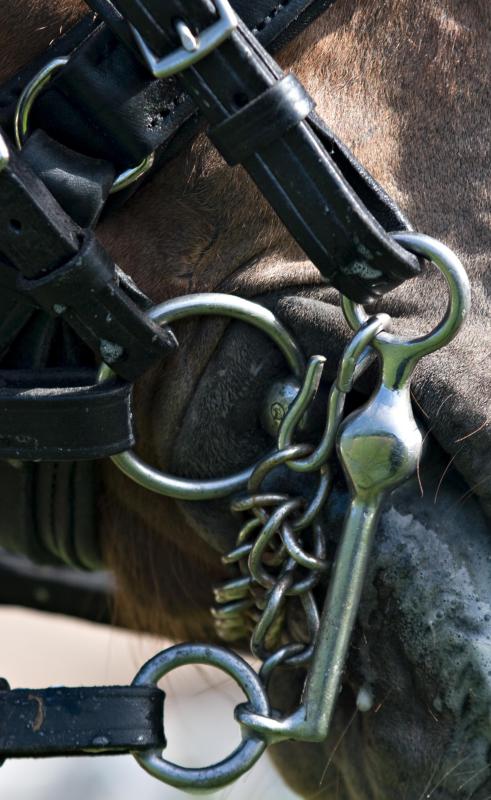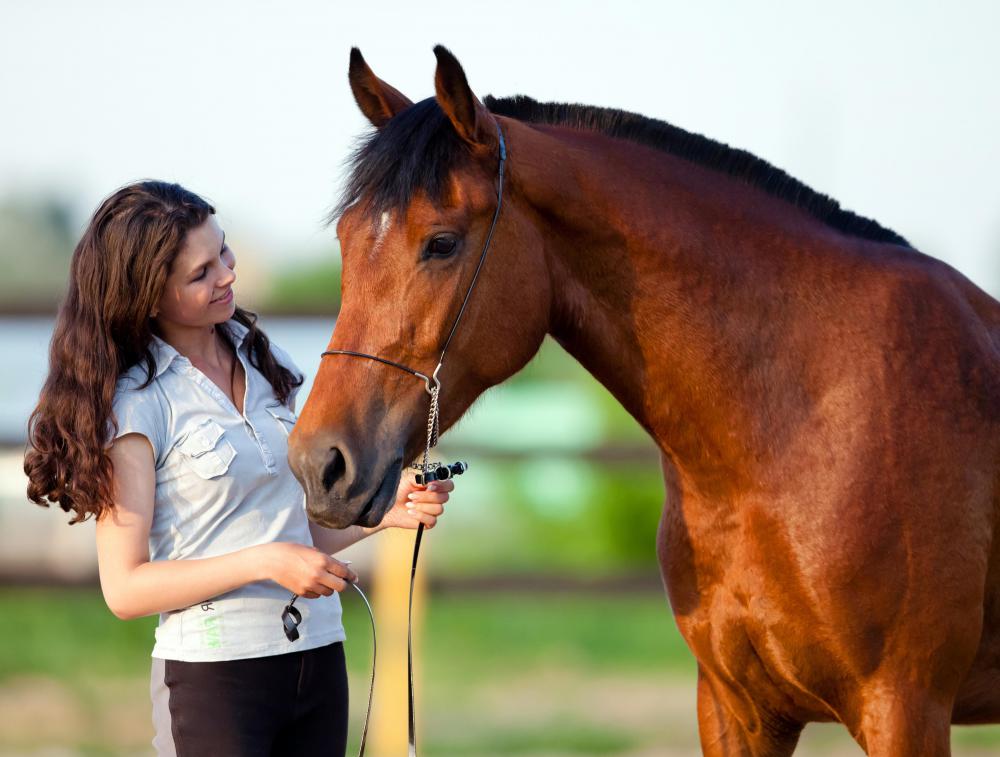At AllThingsNature, we're committed to delivering accurate, trustworthy information. Our expert-authored content is rigorously fact-checked and sourced from credible authorities. Discover how we uphold the highest standards in providing you with reliable knowledge.
Why do People Mount Horses from the Left?
People all over the world learn to mount horses on the left or “near” side when they are learning to ride horses, and many of them never stop to wonder about why this is. For those of us who are curious about practices which do not seem to have a rational basis on the surface, the answer to why people mount horses from the left is fortunately very easy to find. There are two reasons why people mount horses from the left: tradition and training.
Traditionally, many people who rode horses also carried weapons and tools, since horses were used as working animals. Swords tended to be worn on the left side, as did other weapons, so people mounted their horses from the left to ensure that their swords did not bang into the horse while they were mounting. This was especially critical in the days before stirrups, when the rider had to basically vault into the saddle. If people mounted on the off side, their swords would have dragged across the back of the horse while the left leg was being swung into place, upsetting the horse and potentially causing it to bolt.

Because people mounted from the near side, they also got into the habit of gearing everything for near side handling. Saddles typically buckle on the left, as do bridles and other pieces of tack, for example, and horses were trained to be mounted and handled from the left. Although people no longer wear swords to ride, the tradition of mounting from the left has endured because it is simply what people are used to, and because tack and training are geared for near side mounting.

This brings us to the second issue, which has to do with how horses are trained. Horses do not automatically accept riders. They must be taught to wear tack and deal with riders, and in the process, they are desensitized to humans and shown that nothing terrible happens when an experienced rider is aboard. Because horses were originally prey animals, they tend to be extremely nervous, and a big part of their training is learning to stand quietly while someone approaches from the left and mounts, often unseen by the horse.

Because people mount horses on the left during training and teach them to accept near side handling, they can be shy about off side handling, because they are not accustomed to it. As a result, people tend to mount horses on the near side because this is what the animals are familiar with.
However, some trainers and riders recommend teaching a horse to accept both near and off side handling, and to mount from both sides. This makes riders and horses more flexible, and some riders believe that it balances the rider and horse by requiring them to get used to mounting either way. Famous military leaders also historically recommended teaching horses to accept off side handling, so that riders could leap onto a horse from the right in the heat of battle.
Frequently Asked Questions
Why is mounting a horse from the left side the standard practice?
Mounting a horse from the left side is a tradition that dates back to the times when warriors commonly carried swords. Since most people are right-handed, the sword would hang on the left side, making it easier and safer to mount from the left to avoid the weapon's interference. This practice has been passed down through generations and remains the norm today.
Are there any practical reasons for mounting horses from the left in modern times?
While the historical reasons may no longer apply, mounting from the left has become a standard training practice for horses. Horses are creatures of habit, and consistency in mounting helps them stay calm and cooperative. Additionally, mounting blocks and assistance are typically positioned on the left side due to this tradition.
Can horses be trained to be mounted from the right side?
Yes, horses can be trained to be mounted from either side. It's beneficial for a horse's balance and muscle development to be accustomed to mounting from both sides. Training for ambidextrous mounting is especially useful for therapeutic riding programs or situations where mounting from the left might not be possible due to environmental constraints.
Does mounting from the left side affect the horse's health or well-being?
Mounting from one side only can lead to uneven muscle development and potential strain on the horse's spine over time. It's important for riders to occasionally mount from the right side as well to promote symmetrical muscle growth and reduce the risk of injury, ensuring the horse's health and well-being are maintained.
Is there a cultural significance to mounting horses from the left side?
The left-side mounting tradition is deeply rooted in many cultures due to its historical military origins. It has also been reinforced by centuries of equestrian customs and practices. In some cultures, mounting from the right side was even considered bad luck, further entrenching the left-side preference in equestrianism.
How does left-side mounting influence equestrian competitions and sports?
In equestrian competitions, the left-side mounting rule is generally observed for uniformity and safety. Riders are expected to mount from the left in disciplines such as dressage, show jumping, and eventing. This standardization helps ensure that horses are not startled by unexpected behavior, which could lead to accidents during competition.
AS FEATURED ON:
AS FEATURED ON:













Discussion Comments
I was in Iceland in 1971, and the trip included a pony trek. Icelandic ponies are larger than most ponies. We had to mount the ponies from the right, because that was the custom there. The ponies would not allow people to mount them from the left!
Post your comments